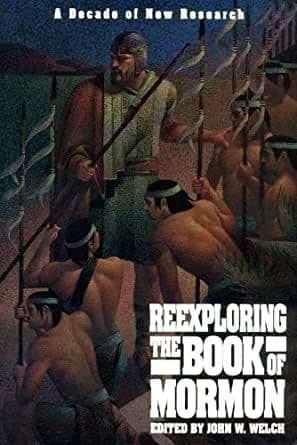Book
85 Chapters

Omni 1:16 “They journeyed in the wilderness, and were brought by the hand of the Lord across the great waters.”
The Nephites were not the only people who lived in the Western Hemisphere in antiquity. The Jaredites (Ether 6:4-12) and the Mulekites (Omni 1:16) also came from the Old World to the New. The archaeological record attests that many others came as well, although how, when, and where they came from remains obscure.
In the past fifteen years, popular publications have claimed that ancient inscriptions in west European or North African writing systems exist in remote locations throughout much of the United States and Canada. The best known of these publications are by Barry Fell. If such inscriptions could be shown to be authentic, they would prove that voyagers crossed the Atlantic before Columbus’s day, a point of interest to many believers in the Book of Mormon.
Despite wide enthusiasm for these claims, most archaeologists have found such flaws in the evidence as to reject the claims. (Incidentally, Fell “translated” the “new copy of the Anthon transcript” immediately after Mark Hofmann claimed to find that forgery. His “reading” sounded a good deal like 1 Nephi 1, although Fell asserted that it was written in Arabic of the twelfth or thirteenth century A.D. Of course, it has since been established that the document was a forgery.)
Many former associates of Fell have distanced themselves from his exaggerated statements while retaining belief that some of the inscriptions are genuine. Among these are W. R. McGlone and P. M. Leonard, authors of Ancient Celtic America (Leonard is a resident of Kamas, Utah). For ten years they have studied inscriptions in caves or rock shelters in southeastern Colorado and the panhandle of Oklahoma.
To draw the attention of reputable scholars to these inscriptions, they hosted a seminar in Springfield, Colorado, September 20-25, 1989, at the time of the equinox. A small number of enthusiasts were joined by an invited group of friendly, though cautiously skeptical, scholars (including John Sorenson), plus outright antagonists.
Among dozens of sites where Ogam writing (known chiefly from Ireland in medieval times) appears, two caves in Colorado were especially examined. At Crack Cave, rays of the sun at the moment of its rising on fall equinox morning strike the cave’s inside wall at precisely the point where an inscription says, when read as Old Gaelic, “Sun strikes [implied, “here”] on the day of Bel.” (Bel is a name of the Gaelic sun god.) The limit of the sun’s rays fits precisely with a curved line at the indicated spot.
In nearby west-facing Anubis Cave, another Ogam inscription has been read as, “Instructions for the Druid. In clear weather the projecting piece of rock eclipses the [mark] at sunset. The shadow will reach nearly to the jaw of the image of the doglike divinity.” Precisely that happened at sunset at the fall equinox. The divinity petroglyph is very similar to the jackal-with-threshing-flail-atop that represented the Egyptian god known to the Greeks as Anubis, who was guardian of the equinoxes.
All the visitors, including the most skeptical, were struck by what they observed. However, exactly what one is to make of these inscriptions in historical terms is not apparent. The cultural knowledge represented in them is foreign to anything known among American Indians at the time European explorers reached Colorado. McGlone and Leonard have evidence that both Ogam writing and Egyptian religious elements could have been present in Spain and Portugal around A.D. 100-400. They suppose voyagers reached America from there. Very preliminary evidence from a new chemical (cat-ion) method of dating these inscriptions agrees that such a date is possible. The idea that the inscriptions are modern fakes is hard to believe.
Professor David Kelley, noted contributor to the decipherment of Mayan (who attended the Colorado seminar), is currently preparing a thorough review of both these matters and all of Fell’s work, to be published in the important quarterly Review of Archaeology. He is finding that many (but not all) of the North American inscriptions in apparent European script, like those described here, are credible. This includes the remarkable petroglyph scene at Rochester Creek in east-central Utah, which displays dozens of astronomically connected Egyptian and Celtic elements. Kelley’s highly informed view is that, despite flaws in the work of Fell and others, conventional scholars are on the verge of being forced to backtrack on their fundamental belief that no important contacts across the ocean took place in ancient times.
Based on research by John L. Sorenson, November 1989. In this connection, see also Cyrus H. Gordon’s article about the Bat Creek inscription in Tennessee, “A Hebrew Inscription Authenticated,” in John Lundquist and Stephen Ricks, eds., By Study and Also by Faith, 2 vols. (Salt Lake City: Deseret Book and F.A.R.M.S., 1990), 1:67-80. Kelley’s extremely informative review was published Spring 1990, pages 1-10.
Book
85 Chapters
Items in the BMC Archive are made publicly available for non-commercial, private use. Inclusion within the BMC Archive does not imply endorsement. Items do not represent the official views of The Church of Jesus Christ of Latter-day Saints or of Book of Mormon Central.